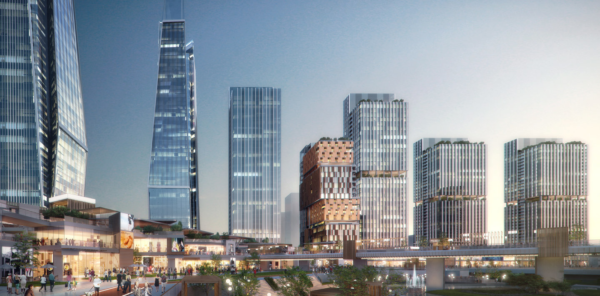As cities around the world have become larger in population size and spread their tentacles way out into the suburban areas and beyond, it has become increasingly difficult to work out ways in which to cater for those population increases. In the past, the architecture of large tower blocks and skyscrapers were deemed commercial entities that wouldn’t have been thought of in the same way as many classical buildings in terms of architecture. As populations and city sizes continue to increase, and space becomes limited and more expensive to build on, however, we now find ourselves in a time where the only way to be successful with urban planning is to think high. The architecture of tall buildings in city spaces is now a vital part of our world.
Skyscrapers have never been viewed in the same way as classical buildings in terms of historical importance but there has been a change in recent years, with exhibits and conferences across the globe now looking to help inform the design and architecture worlds in ways to improve city living with new, efficient and super sleek and slender tall buildings. Building high has always been thought of as the long-term solution for increased levels of urban living, but it doesn’t have to be without any thought for a pleasant aesthetic, or without a nod towards decreasing the impact on the local environment and without creating a community that thrives.
There is a fine balancing act to be had as new skyscrapers for both residential and commercial purposes crop up in major cities around the globe, from New York to London and on to Sydney. Architects of future tall buildings in built-up urban areas have to be careful not to draw criticism of projects in terms of blotting iconic skylines.
Controversy reigned with the ultra-luxury, thin residential 432 Park Avenue in New York, which is thought to stick out in a boring way for many people. In a city known for its stunning waterfront architecture, Liverpool has found itself under pressure and threatened with losing UNESCO- World Heritage status for that area due to large residential structures and other modern buildings obscuring the traditional ‘Three Graces’ that have sat on the banks of the Mersey for so long.
The key to any residential developments in large urban areas is to concentrate residents and amenities, making sure that the density of any particular use isn’t too pronounced. As long as people have enough amenities in close proximity to where they live, they will feel happy. Packing people in and building a large number of skyscrapers in one area, is more likely to lead to unhappiness, congestion in terms of traffic and the areas for pedestrians.
In the future working out the best way to design urban areas, including stylish and efficient skyscrapers for residential purposes, without overcrowding certain areas, will be crucial to the successes of major cities. The best cities are those that have a clutch of ultra-tall buildings, iconic skylines and manage to successfully balance between residential areas and green space.
Content written by Bethany Langley

